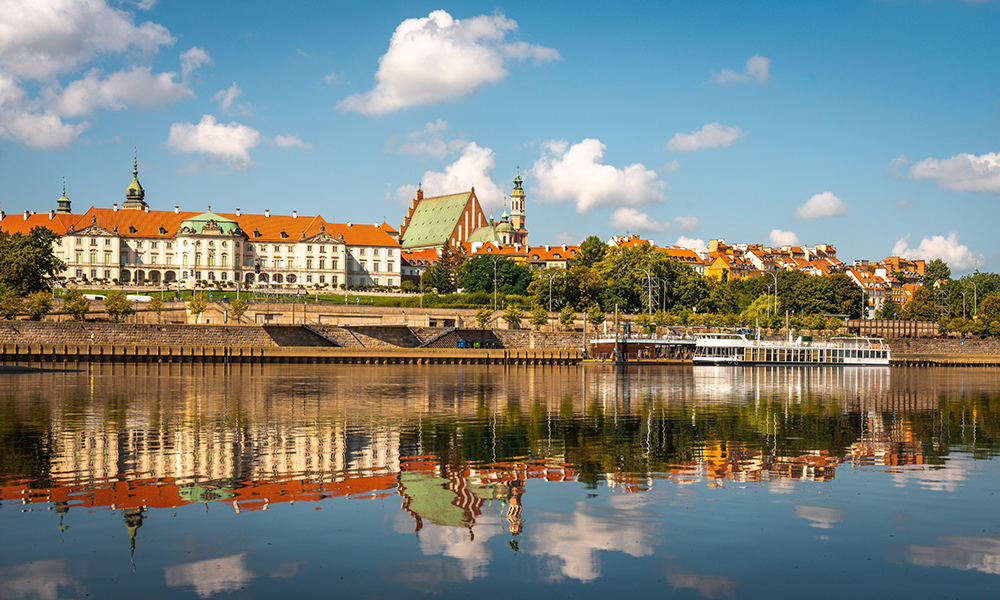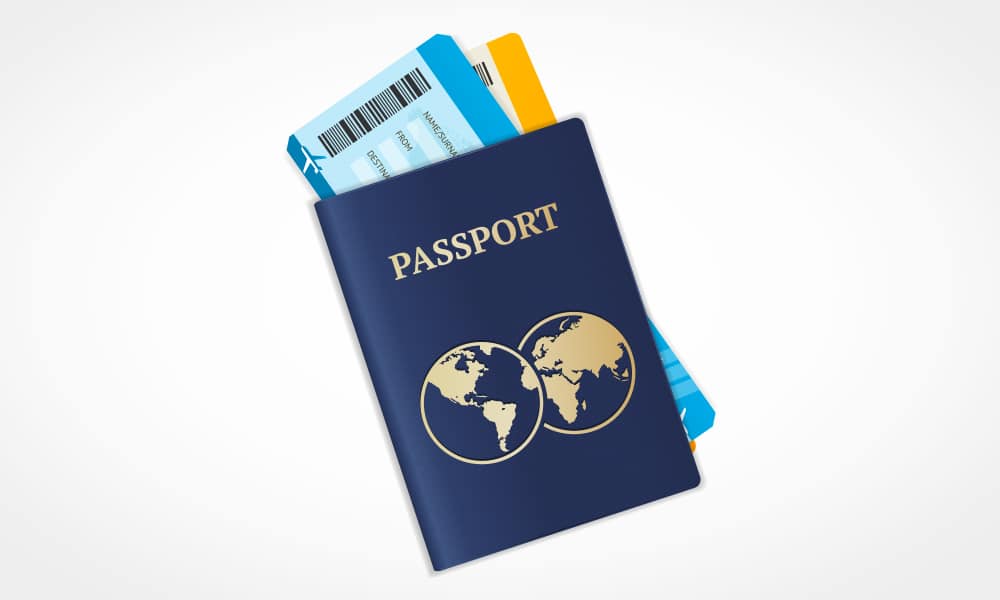- 1
- 2
- 3
- 4
- 1Destinations
- 2Trip Date
- 3Travellers
- 4Medical history
Popular Destinations

Now covers COVID-19
What is Poland Famous For?
You may have heard of Chopin or seen photos of snowy towns, but Poland is so much more than cold weather and classical music. So, what is Poland famous for? It's where cobbled streets meet pierogi stalls, where history whispers through every castle wall. Poland surprises—sometimes with a shot of cherry vodka, other times with the silence of Auschwitz. If you're curious and ready for something different, this country will open up in layers.
Travel Insurance Plans on PolicyBazaar#1
- Individuals
- Sr. Citizens
- Students
Why is Poland on Everyone's Bucket List?

Poland offers a blend of heritage, resilience, and unexpected beauty that's hard to shake off. Here's why it earns a spot on so many travel lists:
- Because a quiet walk through Kraków's Rynek or Gdańsk's painted streets feels like paging through a living storybook.
- Auschwitz leaves you silent, and Warsaw reminds you how cities, like people, can begin again.
- The Tatra Mountains stretch is picturesque, and Morskie Oko—hidden among them—feels like a fairy tale.
5 Reasons Why Poland is So Famous
Poland wins you over slowly—with moments, not monuments. For those just discovering it, here's why it keeps finding its way into people's plans.
1. History That Speaks
Poland has seen more than most countries its size—but instead of forgetting, it remembers. The country has:
- Auschwitz-Birkenau, once the largest Nazi concentration camp, is preserved exactly as it was—not for spectacle, but to ensure no one forgets what happened there.
- Warsaw, flattened in World War II, was rebuilt brick by brick using paintings and photographs as a reference. The Old Town you see today is a replica created by its own people—it's a living act of remembrance.
- Kraków's Old Town survived the war and shows you medieval streets, Gothic towers, and Renaissance courtyards all in one afternoon.
2. Landscapes That Ground You
Poland's nature isn't exaggerated or overrun—it's steady, accessible, and full of possibilities. When visiting the country, you must add the following to your Poland itinerary:
- In the Tatra Mountains, you can trek scenic trails, spot mountain goats, or stay overnight in a wooden chalet surrounded by pine.
- Morskie Oko, a lake framed by pine, is perfect for first-time hikers. You can circle the lake, rent a horse-drawn carriage on the way back, or just sit beside the water and rest.
- Białowieża Forest, one of the last primaeval forests in Europe, lets you explore ancient woods and even spot the endangered European bison.
3. Cities with Character
Every Polish city has its own rhythm—it's not just sightseeing; it's understanding how people live. Visit the following cities:
- Kraków is where students, musicians, and centuries-old cathedrals coexist—walkable, lively, and full of cafés and craft stores.
- Wrocław has over a hundred bridges and a quirky habit: small bronze gnome statues hidden throughout the city.
- Gdańsk on the Baltic coast feels different from inland Poland—its maritime history, amber markets, and shipyards give it a coastal personality.
- Lublin, close to the eastern border, once connected cultures—Polish, Jewish, Lithuanian, and Ukrainian–is now a quiet academic city with strong literary traditions and a beautifully restored old town square.
4. Food Made for Comfort
Polish food might surprise you—it's simple, filling, and made with love. You can sample:
- Pierogi are hand-folded dumplings filled with anything from mashed potato to mushrooms or berries.
- Zurek, a tangy rye soup served with egg and sausage, is often eaten during Easter but enjoyed year-round.
- Placki ziemniaczane (potato pancakes), bigos (hunter's stew), and apple cake with cinnamon are famous.
5. Traditions Still Alive
The culture here isn't packaged—it's practised. Like:
- During Wianki, a midsummer festival, locals float flower wreaths on rivers to mark the season.
- Christmas markets in towns like Wrocław and Poznań feel festive but familiar—more local than commercial.
- Village fairs, Sunday mass, and folk dances are still part of family life in many parts of Poland.
7 Top Places to Visit in Poland
Poland's richness lies in the contrast—between restored cities and untouched forests, war memorials and café-lined squares. The following are the top places to visit in Poland that offer a well-rounded introduction to the country's history, nature, and daily life.
-
Kraków
A city where every street corner holds a piece of Europe's cultural past. From Wawel Castle to the Jewish Quarter, it invites you to walk, pause, and listen. -
Warsaw
Rebuilt from near-total destruction, Warsaw is a symbol of persistence. Today it's a mix of Soviet-era structures, modern glass towers, and a carefully restored Old Town. -
Gdańsk
This Baltic port city once launched the Solidarity movement. It's compact, colourful, and perfect for those who want history with a sea breeze. -
Wrocław
Built around rivers and bridges, Wrocław has a youthful energy and a whimsical side—spotting its tiny gnome statues becomes part of the experience. -
Lublin
Less known but deeply layered, Lublin has long been a meeting point of cultures. Its old town holds centuries of co-existence—Catholic, Jewish, and Orthodox—and its streets still carry that complexity. -
Auschwitz-Birkenau Memorial and Museum
Located near Oświęcim, it's not a tourist site—it's a place of remembrance. A guided visit helps understand the full scale and meaning of what happened here. -
Torun
Birthplace of Copernicus and a UNESCO-listed Gothic town, Torun feels intimate and preserved, ideal for a quiet detour without large crowds.
Best Time to Visit Poland
If you want pleasant weather without the crowds, May to June and September are ideal. Everything's open, the parks are in full bloom or turning golden, and you don't have to queue endlessly. July and August bring energy and festivals but also a tourist rush. Winter has its own charm—especially if you are drawn to snow-covered towns or Christmas lights in Kraków. You can choose the best time to visit Poland per the purpose of your trip.
Tips for Travelling to Poland
If you are planning your first trip to Poland, a little preparation goes a long way. Things work differently here—quietly, efficiently, and often without much English. These tips will help you know about the many things to do in Poland and what to expect when you land.
- Most people don't speak English fluently outside tourist areas—download a Polish phrasebook app or keep basic words handy; even a "Dziękuję" (thank you) goes a long way.
- Get your travel insurance for Poland before applying for your Schengen visa to ensure it does not get rejected.
- Carry some cash (Polish złoty) for local shops and cafés, especially in smaller towns where cards may not be accepted. Currency exchange is easy in cities—look for kiosks marked “Kantor”.
- If you are vegetarian, you will need to look a bit harder—milk, eggs, and meat are staples.
- Public transport is reliable and affordable—trams, buses, and intercity trains are easy to navigate. Validate your ticket before boarding, especially on trams.
- Respect local customs. Polish people don't usually make small talk with strangers, and queues, even for buses, are followed strictly.
- Tipping is expected in restaurants—about 10% is appreciated if the service isn't already included in the bill.
Take It Slow
Poland doesn't ask you to rush. Spokojnie — calmly, gently — is how most things move here, and it's how you will find your way too. Whether you are navigating trams, sharing a table, or standing in silence at a museum, let things unfold at their own pace.
What is Poland Famous For?: FAQs
-
Q1: Do Indians need a visa for Poland?
Ans: Yes, you will need a Schengen visa for Poland. It covers Poland and the countries in the Schengen area, so one visa gets you pretty far. -
Q2: How long does it take to get a Polish visa from India?
Ans: It may roughly take 2–3 weeks to receive your visa after your appointment, though it can vary. It is best to apply at least a month in advance so you do not have to chase dates at the last minute. -
Q3: Is travel insurance mandatory for Poland?
Ans: Yes, travel insurance for Poland is mandatory as it is a prerequisite required for the Schengen visa; your policy must cover at least €30,000 in medical emergencies. -
Q4: Are there Indian restaurants in Poland?
Ans: Yes. You can find Indian restaurants in Poland, especially in Warsaw, Kraków, and Wrocław. Many of them are run by Indian expats.
STANDARD TERMS AND CONDITIONS APPLY. For more details on risk factors, terms, and conditions, please read the sales brochure carefully before concluding a sale.
Policybazaar Insurance Brokers Private Limited, Registered Office - Plot No.119, Sector - 44, Gurgaon, Haryana - 122001 | CIN: U74999HR2014PTC053454 | Policybazaar is registered as a Composite Broker | Registration No. 742, Valid till 09/06/2027 | License category - Composite Broker | Contact Us | Legal and Admin Policies
* Price shown is for a 30 day trip to Poland with 50,000 dollar coverage for an adult of age 25 years































